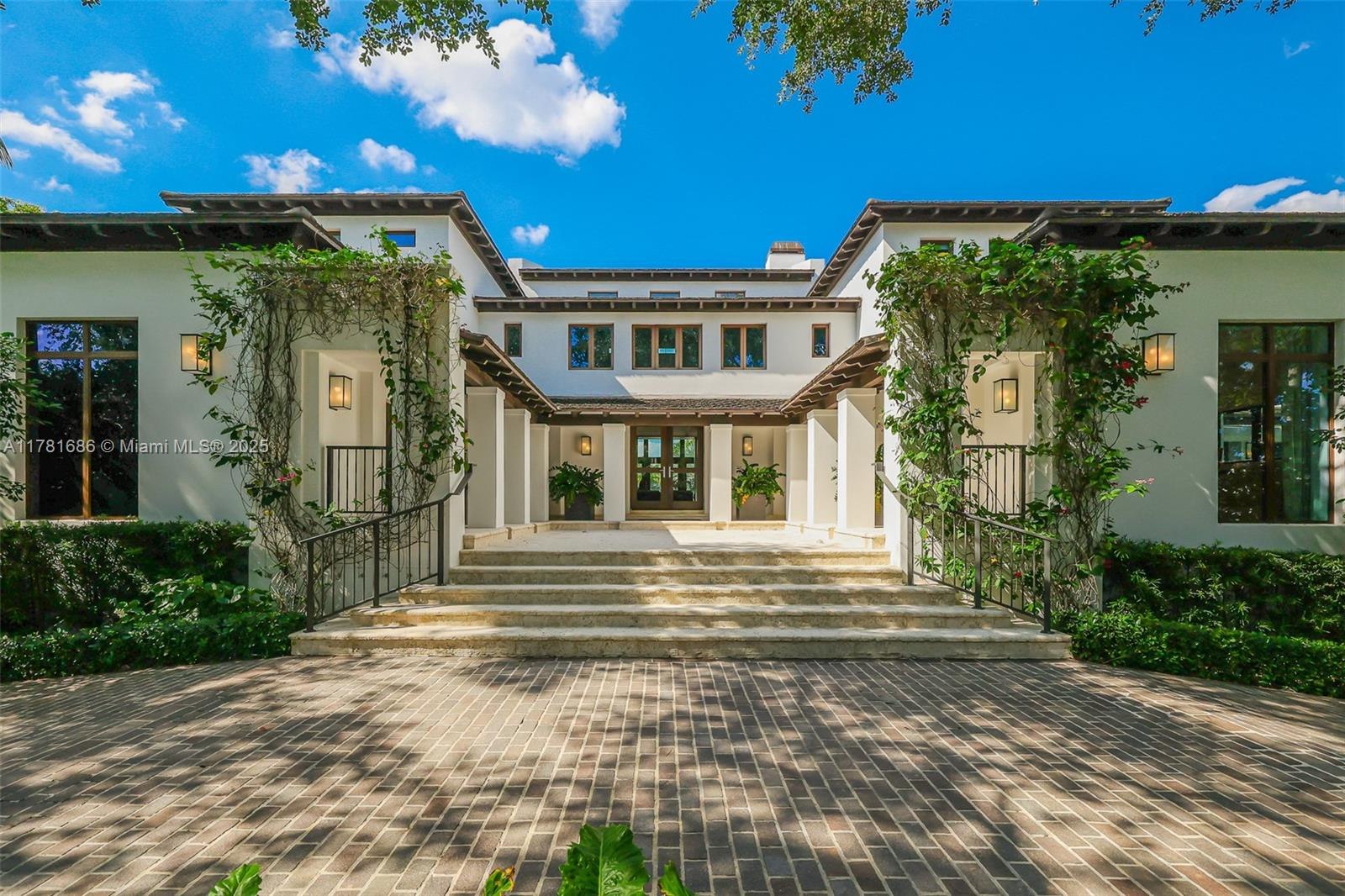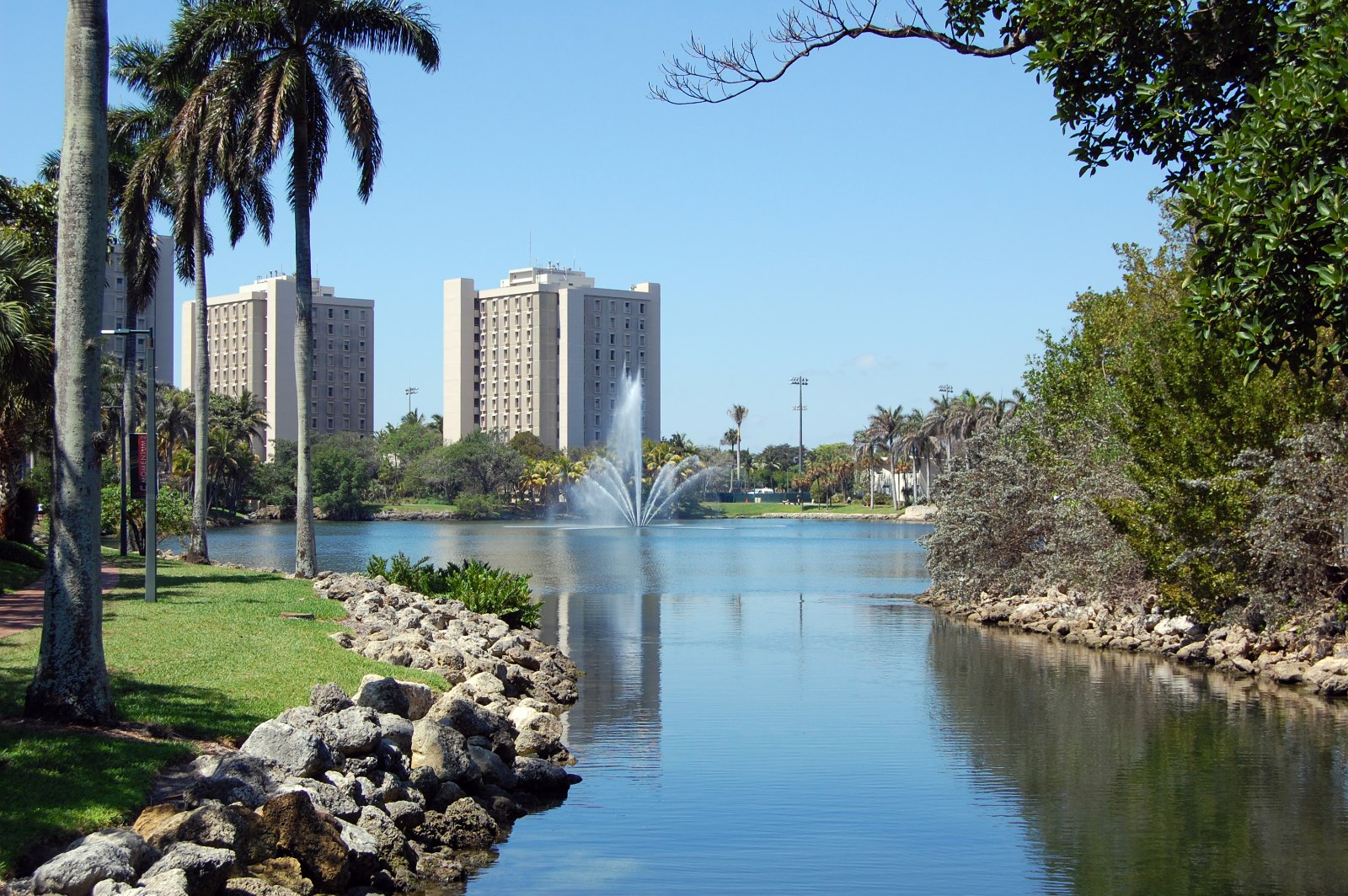Coral Gables

Palm-lined streets and Mediterranean architecture define Coral Gables’ timeless cityscape.
Coral Gables is known as The City Beautiful for a reason. Its master-planned layout, tree-lined streets, and graceful symmetry express the same measured beauty that defines its architecture. Every detail feels deliberate, from the green canopies that frame its avenues to the balance between privacy and community. It reflects a century of vision, discipline, and enduring pride in the city’s beauty and lifestyle.
A LEGACY BUILT ON VISION AND BALANCE
Founded by George Merrick and incorporated in 1925, Coral Gables was built on the City Beautiful movement’s belief that thoughtful planning and architectural harmony could shape a better way of living. Merrick looked to Mediterranean towns for inspiration, using Miami limestone, also known locally as coral rock, along with red-tile roofs and ornamental details to give the city a distinct identity.
That vision came to life through streets designed with intention, framed by lush canopies and marked by grand entrances that remain part of the city’s landscape today. Landmarks like the Biltmore Hotel and the Venetian Pool were created not as showpieces but as working parts of the community, blending design with daily life. Even Merrick’s own home, now preserved as the Merrick House Museum, stands as a reminder that the city was always meant to be lived in, not just admired.
Nearly a century later, Coral Gables still follows the principles Merrick set in motion. Its architecture, green spaces, and civic buildings carry forward that same sense of balance and beauty, keeping the city’s history not only visible but alive in every detail.
A MARKET DEFINED BY DESIGN AND STABILITY

Homes in Coral Gables blend timeless architecture with modern South Florida living.
In Coral Gables, real estate reflects the same discipline and design ideals that shaped the city itself. Proportion, craftsmanship, and permanence remain at its core, creating a market where historic architecture and modern construction coexist naturally:
- Historic Mediterranean estates: Early 20th-century homes built with coral rock, red-tile roofs, and detailed ironwork form the city’s architectural foundation. Many restored residences are located along Coral way, Granada Boulevard, and within the original residential core.
- Modern architectural homes: Newer builds reinterpret Mediterranean principles with clean lines, natural materials, and open layouts while maintaining balance and restraint.
- Waterfront properties: Along the Coral Gables Waterway and Biscayne Bay, homes in Gables Estates, Cocoplum, Hammock Oaks, and the Old Cutler Road corridor offer privacy, deep-water canal access, and direct bay connectivity. These waterfront homes for sale in Coral Gables rank among South Florida’s most desirable.
- Tree-lined interiors: Away from the bay, quiet streets and mature landscaping frame Old Spanish homes and new estates on wide lots surrounded by tropical greenery.
This mix of history, design, and stability defines luxury real estate in Coral Gables. Inventory stays tight, demand is consistent, and property values are supported by the city’s enduring prestige. At the high end, select listings move privately through trusted Coral Gables real estate agents, reflecting the market’s discretion and long-term confidence.
LIFE IN CORAL GABLES, FLORIDA
Beyond its architecture, Coral Gables stands out for how it lives – with warmth, elegance, and a spirit all its own. Mornings unfold beneath tree canopies, afternoons bring the hum of cafés and shaded parks, and evenings wind down in the calm of quiet streets.
More than 60 parks and open spaces shape everyday life in the city, offering places to walk, meet, or simply pause. Neighborhoods feel connected through thoughtful planning and well-kept public spaces that encourage an unhurried, community-centered way of living.
Dining and shopping

Outdoor cafes and shaded plazas bring Coral Gables’ dining scene to life.
Dining and shopping in Coral Gables reflect the city’s blend of tradition and sophistication. Local favorites, fine dining rooms, and boutique retail spaces all thrive within its walkable downtown streets.
Miracle Mile anchors the district with a mix of long-running restaurants, new culinary names, galleries, and specialty shops. The city’s redesign of the street added wider sidewalks, open-air seating, and trees that shade diners through the afternoon. A few blocks away, Giralda Plaza has become the city’s gathering spot, a pedestrian-only walkway lined with cafes and bars that stay lively late into the night.
For upscale retail, Shops at Merrick Park brings together designer labels, international brands, and fine dining in an open-air setting surrounded by fountains and palms. Across the city, smaller boutiques and independent stores balance that polish with a more personal, neighborhood feel.
Arts and culture
Coral Gables has long tied its sense of beauty to its cultural life. The city’s theaters, museums, and creative institutions reflect the same appreciation for art and community that shaped its streets. This focus on culture has built a network of venues that continue to define Coral Gables’ creative identity:
- Coral Gables Museum: Set inside the city’s restored 1939 Police and Fire Station, the museum highlights local architecture, urban planning, and civic history through rotating exhibits and community programs.
- Actors’ Playhouse at the Miracle Theatre: A landmark on Miracle Mile that stages Broadway-style productions, family shows, and educational programming throughout the year.
- Coral Gables Art Cinema: A nonprofit theater known for its curated selection of independent and international films, documentaries, and special screenings in an intimate setting.
Around these venues, Coral Gables continues to make room for public art and live events that extend creativity into daily living. Each January, the Beaux Arts Festival transforms the University of Miami campus into an outdoor gallery for artists from across the country, while Giralda Plaza hosts recurring performances and installations in an open-air setting that brings art directly into public life.
Education and schools

The University of Miami anchors Coral Gables’ academic and cultural life.
Coral Gables approaches education with the same care it gives to every part of city life: by investing in schools and institutions that strengthen its sense of community. Learning here spans every stage, from strong public programs to nationally respected universities:
- Public schools: Many neighborhoods are served by Coral Gables Preparatory Academy (K–8), George Washington Carver Middle School, and Coral Gables Senior High School, each known for academic quality and active parent involvement.
- Private schools: Independent campuses such as Riviera Schools, Saint Philip’s Episcopal School, and Gulliver Preparatory School (PK–8 campus) offer smaller class sizes, rigorous programs, and a focus on personal development.
- Higher education: Anchored by the University of Miami, Coral Gables benefits from a major academic institution that contributes to local research, arts, and community life through lectures, performances, and athletic events.
Coral Gables FAQs
What types of homes are available in Coral Gables?
Luxury homes for sale in Coral Gables span historic Mediterranean estates, modern waterfront residences, and new construction homes on spacious, landscaped lots. In addition to these signature estates, the city offers townhouses, condominiums, multi-family homes, and lots for future building, all guided by long-standing design and preservation standards that help maintain each neighborhood’s architectural character.
How competitive is the Coral Gables real estate market?
The market remains steady and in high demand, especially within gated enclaves such as Gables Estates and Cocoplum. Inventory is limited, so many buyers work with specialized Coral Gables real estate agents to access listings before they reach the public market.
Is Coral Gables walkable?
Yes. The downtown core is highly walkable, with widened sidewalks along Miracle Mile and a pedestrian-only promenade at Giralda Plaza. Restaurants, cafés, and shops are all within easy reach, creating a city center designed for everyday use.
Are there restrictions for renovating historic homes?
Yes. Coral Gables has a Historic Preservation program and board that reviews exterior work on designated properties. The guidelines are designed to protect the city’s architectural heritage and maintain its cohesive look.
What is the cost of living like in Coral Gables?
The cost of living in Coral Gables is higher than the national average, mainly due to housing. Even its high-profile residents see it as a long-term investment, supported by stable property values, strong schools, and a high overall quality of life.
A CITY MEANT TO BE LIVED IN
Few cities capture timeless luxury the way Coral Gables does. Its homes, architecture, and atmosphere continue to define luxury living in South Florida.
For buyers and investors, Coral Gables offers permanence. The city’s planning, stability, and consistent demand have made it one of the region’s most trusted real estate markets, where every property carries lasting value.
The Jills Zeder Group has helped shape that success for decades. Their deep local insight and global reach allow them to guide clients through every stage of the buying and selling process with precision and discretion. Their experience in Coral Gables luxury real estate gives clients access to opportunities and expertise that few others can match.
To explore current listings or schedule a private consultation, contact the Jills Zeder Group, the trusted name in South Florida luxury real estate. Start your search today and see why Coral Gables remains South Florida’s most timeless address.
